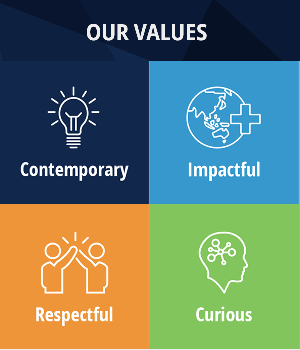Imagine a waterfall. It’s got mossy green sides and the water cascades down into a glorious sparkling pool lined with round river pebbles. The water flows from one point to the next in sequence, and this is where the Waterfall project management method gets its name.
Waterfall is the method where you have a scope and what’s in and out of scope is clearly defined.
You have milestones and a delivery date where the entire chunk of work is delivered at the end. It is often used in mining projects because there is a clear start date, a specific set of objectives and an end date.
A major benefit of Waterfall is that it ensures the project is delivered on time and budget because it’s led by the project management governance. They ensure that you’re meeting every timeline, you’re addressing every risk that arises and you’re delivering the whole scope by the end date.
Clifford D’Cunha, director of Performance Improvement Methodologies Training and Consultancy, says Waterfall helps a business be razor focused and deliver objectives on time and on budget.
"For example, when you construct a bridge, you know the bridge needs to be completed by June 2020. You have a budget and you ensure that everything that’s required is within budget and delivered on time, so by June 2020,” D’Cunha says. “That’s in itself a Waterfall.”
He explains that Waterfall doesn’t really allow changes to scope and therefore has low tolerance for emerging risks.
Because of this, industries that would traditionally use Waterfall, such as infrastructure and large organisations, often now add Agile to their mix. D’Cunha says it’s usually about 50/50 now.
He previously worked on helping to upgrade a major bank’s core system.
“That had a very set timeline and it failed miserably primarily because regulations around what the bank needed to deliver changed within the two-year period and they realised Waterfall wasn’t the best methodology,” he says.
“They probably had to accommodate more agility in there, where they adapt to a new core system and respond to the regulatory environment changes.”
“It was a massive failure and it cost that business around $750 million.”
When implementing the Waterfall method on a project, D’Cunha says it takes approximately 6 months. There are six main steps to Waterfall:
1 Requirements
Here you gather all the information for the requirements such as the people and resources. You work out the various steps to completion and give different options for getting to the final product.
2 Design
A ‘design document’ finalises options from step one and lays out everything that is needed to bring the project to fruition such as technical aspects, procedures, processes, testing and success metrics.
3 Implementation
This is execution and delivery where you start mobilising resources and start getting the groundwork done.
“Execution is obviously when the program is at its peak,” says D’Cunha.
4 Testing
A quality check is important on any project. Here, the project is tested against quality and success metrics. If the project fails here, the team may need to go back to the previous step.
5 Project completion
The project is fully operational and ready to be released to the end user.
6 Maintenance
As the product is used, and as issues arise the team addresses and solves them.
“There is a whole lot of documentation that goes along with it which ensures that the project is sustainable and was endorsed by the project sponsors saying it’s the project that deal with what it was supposed to deliver,” D’Cunha says.












